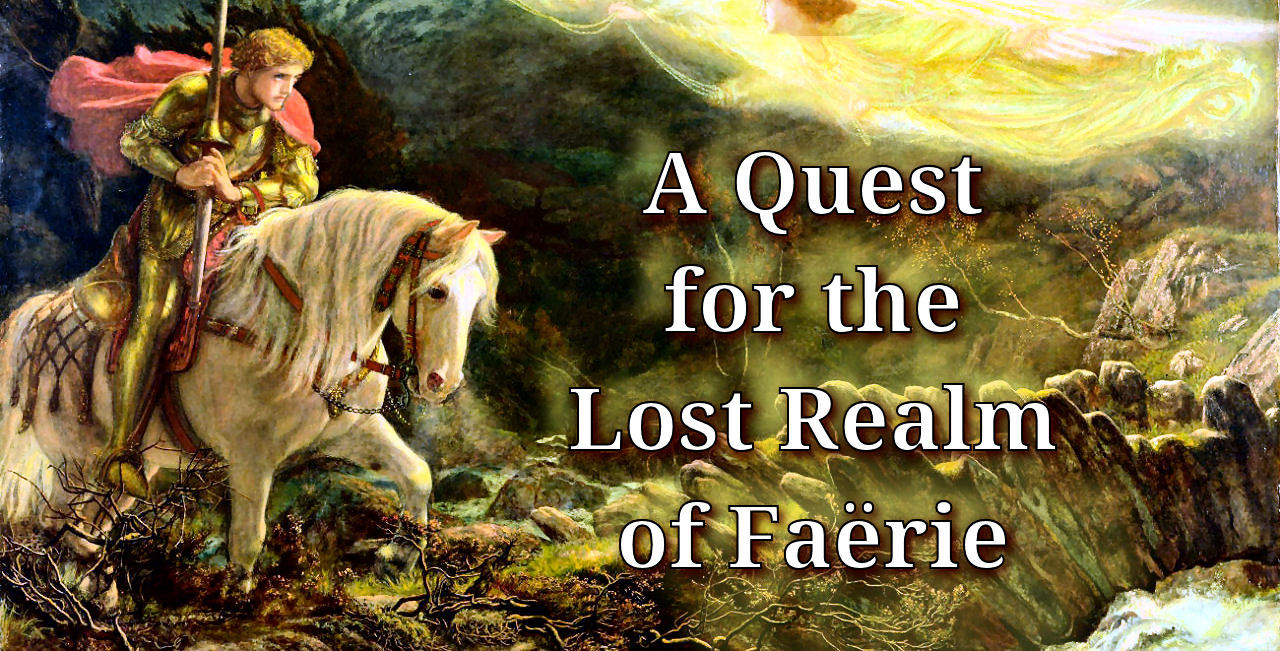

The first and most important thing to know about the Otherworld is what it isn’t. It is not hell. In exactly the same way as all the other things we have been looking at, the Otherworld, Underworld, Hades, Avalon, Annwn or Annwfn have all been corrupted and co-opted by Christianity to become hell – the home of the Devil, his demons and tormented souls.
● The Otherworld ○ The Land of the Dead ○ The Otherworld Kingdom of the Fomorians ○ Entering The Otherworld ○ ‘How’s about them apples?’ ○ The Expulsion from Paradise ○ The Realm of Faërie and The Otherworlds ○ Rebirth/Reincarnation ○ The White Gods ○ The Astral ○ Dot‑to‑dot in the night sky ○ Bestiaries ○ Gargoyles in the Rainforest ○ In Peru, they’re not alone ○ The Archons
● Conclusions ○ The Marketing of Christianity ○ Colón ‑ Coloniser and Bringer of Christianity ○ Trending Scenarios & Further Research ○ Terror by Climate
● A Eucatastrophic Finalé
Annwn or Annwfn is traditionally translated as ‘otherworld’. Alternative translations are ‘un-world’, ‘very-deep’ and ‘extreme world’, which sounds more like a theme park. It’s a place that you can sail to by ship and also one you can rule over or rather be a guardian of – given the right circumstances. It doesn’t have a single location or point of entry. You can travel to its various locations over the land or sea of our physical world, but once you arrive you may not necessarily be able to enter or even see it without an invitation.
“There are many Otherworlds. The Tir-na-nog of the ancient Irish, in which the races of the Sidhe exist, may be described as a radiant archetype of this world, though this definition does not at all express its psychic nature. In Tir-na-nog one sees nothing save harmony and beautiful forms. There are other worlds in which we can see horrible shapes.” ‘The Fairy-Faith in Celtic Countries’, by W. Y. Evans-Wentz,1911.
The Welsh Triads speak of Gwerddonau Llion and its green meadows of the sea. These green fairy islands gave rise to many extraordinary tales, not least of which was the obviously corrupted claim that they were the home of certain Druids undergoing a romantic sort of purgatory because they were not considered wicked enough to go to hell or holy enough to go to heaven. In the fifth century the British King Gavran determined to go in search of these enchanted islands taking his family along with him. His voyage is commemorated in the Triads as one of the Three Losses by Disappearance. The other two were Merlin's departure in a glass ship and Madog's voyage of discovery to America. The partakers of these three voyages were never seen again.
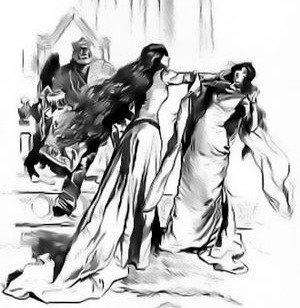
This slap was recorded in the Welsh Triads as one of the Three Fatal Slaps
F. H. Townsend, 1897 Public domain
Those enchanted green islands were still being spoken of by sailors in the 19th century. To the west of Pembrokshire, out in the Irish channel, these fairy islands can often be seen, although only briefly before they disappear. Tradition has it that in the early 1900’s some sailors went ashore on one of the islands unaware of their reputation. Fortunately it wasn’t until they returned to their boats that the land simply vanished before their eyes.
The Fae inhabitants of these islands were claimed to have done their weekly shopping at the Milford Haven and Laugharne markets. Apparently they never spoke, but selected their purchases and passed over the exact amount of money without needing to ask the price. The stallholders would not always see such customers, but many people did. One Milford Haven butcher in particular was regularly favoured with their custom.
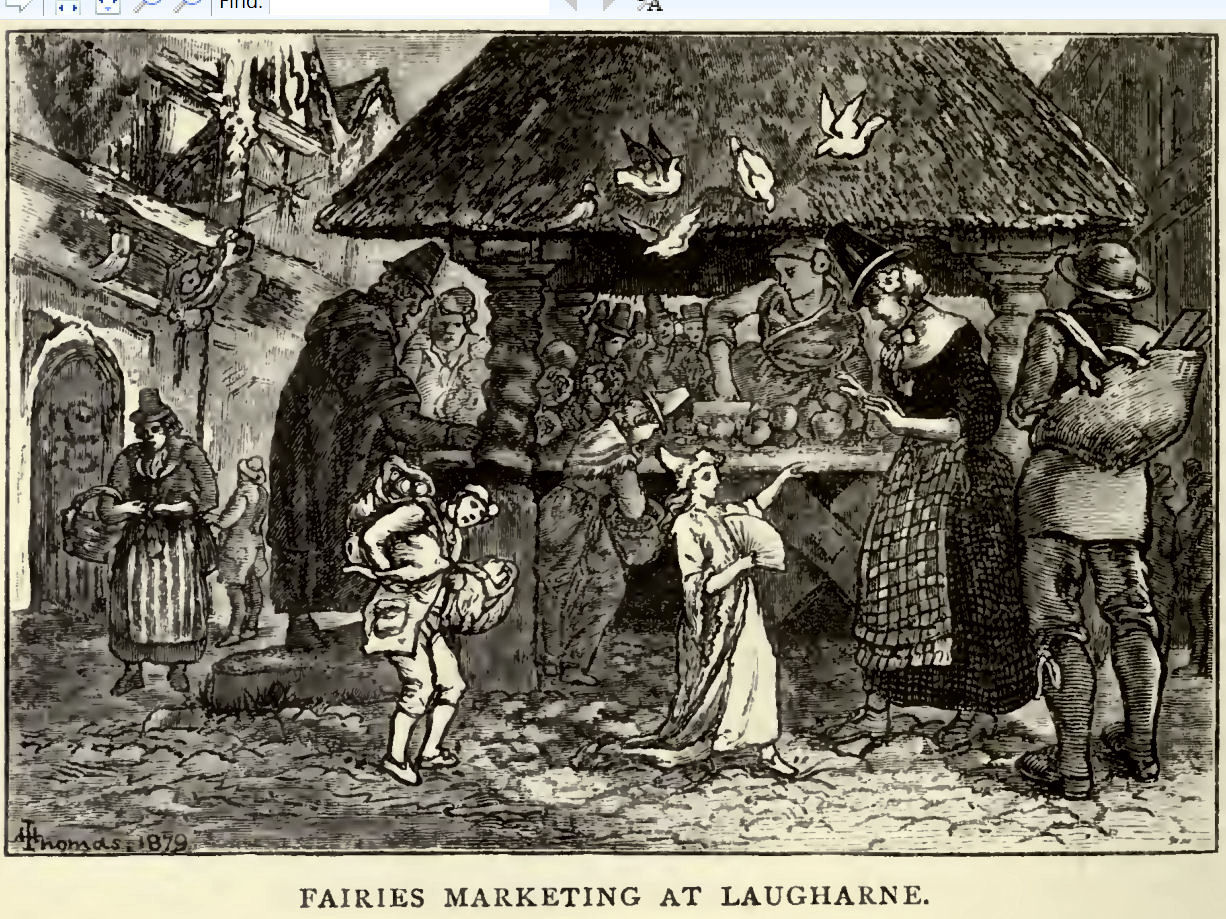
Fairies at market at Laugharne, Pembrokeshire, South Wales.
From British Goblins by Wirt Sikes, 1880
The enchanted green islands could be seen easily from Milford Haven and it was believed that the Fae inhabitants communicated with the mainland by virtue of a subterranean tunnel under the sea.
There is much more to say regarding the Pembroke peninsula, but fascinating as it is, another article would be required to do it proper justice.
One of the eye-witness accounts from ‘The Fairy-Faith in Celtic Countries’, by W. Y. Evans-Wentz, speaks of there being three great worlds which we can see while we are still in the body: the earth-world, mid-world, and heaven-world. The beings of the mid-world are described as ‘shining’, whilst those of the heaven-world are opalescent. This implies that there are more ‘worlds’ available once we are free of the body.
“Not only do both educated and uneducated Celtic seers so conceive Fairyland, but they go much further, and say that Fairyland actually exists as an invisible world within which the visible world is immersed like an island in an unexplored ocean, and that it is peopled by more species of living beings than this world, because [ìt is] incomparably more vast and varied in its possibilities.” ‘The Fairy-Faith In Celtic Countries’ by W. Y. Evans-Wentz, 1911.
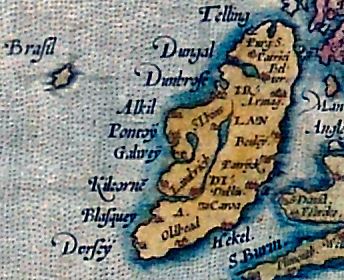
Hy Brazil
Source
Another popular location for the Otherworld in old Irish manuscripts was out in the Atlantic to the west of Ireland, quite like Atlantis in fact, except it was known as Hy Brazil or Hy Breasail as Tolkien spells it. Manannan Mac Lir, the Son of the Sea and a fully paid-up member of the Tuatha de Danann, was one of its rulers. The Fae inhabitants never experienced death, nor pain or sorrow, but enjoyed immortal and unfading youth, endless joy and feasting. The fairy women would sail their spirit boats to the mainland in search of mortal men whom they would lure away with their charms. I’m sure many of us would like to put our names down for that excursion.
This island appeared on maps as early as 1325 and onward until 1865. The old legends claim that it is visible once every seven years, but of course, people are far too sensible to see it these days. Back in 1908 “many men of intelligence testify to having seen Hy Brasil at the same moment, when they have been together, or separated.” (ibid.)
Irish manuscripts contain many descriptive names of the Otherworld: Tír-na-nog, ‘The Land of Youth’; Tír-Innambéo,‘The Land of the Living’; Tír Tairngire, ‘The Land of Promise’; Tír N-aill, ‘The Other Land (or World)’; Mag Már, ‘The Great Plain’; Mag Mell, ‘The Plain Agreeable (or Happy)’; Emain Ablach, ‘Isle of Apples’. The latter name is also used in the Brythonic, Welsh and Arthurian traditions along with Avalon and Annwn or Annwfn.
It would appear then that this Otherworld or Underworld is not located in one specific place, nor is it the exclusive domain of any one particular race or type of invisible beings. Neither is it reserved for gods and goddesses as it’s also inhabited by all the different varieties of Fae. One other feature that we haven’t considered very much, as yet, is that, as far as humans are concerned, it’s also the land of the dead. There are countless folktales of fairy-processions around their mounds where witnesses have seen the recently deceased amongst the revellers. Earlier I described how St. Patrick conjured up the spirit of a long dead warrior and this in turn attracted a Fae woman who appeared out of nowhere. The dead of our reality are the living in the Otherworld. What we call death and what we understand it to imply don’t exist in the Otherworld.
This Otherworld occupies the same physical geography as our world. In fact, there are probably even more Otherworld locations than there are over-world ones as the Fae live inside what appear to us as rocks and mountains, streams, wells and rivers and trees – even under the sea, where they have palaces – and on islands that appear and disappear. Tolkien had a very interesting take on the subject. His view, as expressed in the ‘On Fairy Stories’ essay, is that the primary reality of both the Fae and men is the same, but differently “perceived and valued.” Physical shape and form is obviously of no consequence to them other than for its location. By this I mean in terms of territory. The Otherworld is partitioned into territories as it seems that, for example, fairies are not forced to live alongside demons, unless by choice.
If we return to the subject of the Fomorians for a moment, the old Irish manuscripts record that when they were defeated by the Tuatha de Danann at Moytura, they left Ireland altogether, returning to their own ‘country’ far beyond the Ocean. This was their territory in the Otherworld which was ruled over by their god-king, Tethra, just as he had once ruled in our world. Fairy women from Tethra’s kingdom would return to Ireland to entice away mortals with promises of becoming legendary heroes amongst the Fomorians in the Otherworld.
In the poem from The Book of Taliesin called, ‘Preiddeu Annwfn', meaniing The Raid on The Otherworld, Arthur and his Knights journey through wild waters to the Septentrional Islands at the North Pole to rescue Gweir, the sun god, who was being kept imprisoned in chains and to find a cauldron referred to as the Treasure of Annwfn. This imprisonment and binding in chains is probably an allegory for there being no sun for an extended period – chaining it up would stop it from rising. In other words, darkness and cold descended upon the land. This had been the result of misdemeanors by father and son, Pwyll and Pryderi, who had abused their position as rulers or guardians of Annwfn. [Update: Gweir as a sun-god seems unlikely and is unverifiable, apart from one dubious reference. Also Pwyll and Pryderi's misdemeanors may be a bad translation. Future updates will be posted on this subject as they occur.]
In ‘Celtic’ lore the cauldron is the major symbol of the Otherworld in that it symbolises the womb of the Great Goddess whereby everything is born out of it and returns to it. It is also a symbol of rebirth, the hearth, of abundance and of well-being. The cauldron is common to many ‘Celtic’ stories and they are described as great treasures with magical powers. If this was also being held in chains then all life was threatened. This presents the possibility that the Otherworld location of The Cauldron of Life – which would later become The Holy Grail, was at the North Pole under the watchful eye of the Great Bear - Arcturus.
The Gundestrup Cauldron c. 100 BC AD 1 found in Gundestrup northern Jutland Denmark
Source
So if all varieties of Fae and gods are comfortably provided for in the Otherworld, what about us, I hear you ask? Good question, I reply. It seems that we humans are getting a really raw deal out of all of this. The Fae can come and go between the Otherworld and our world as they please, but we have to go through death to get there and who knows what’s involved in coming back. When we’re there do we have a territory? Is there a Human Kingdom in the Otherworld? We suspect there are a great many.
Tolkien considers that the Fae possess a skill he refers to as ‘Enchantment’ which for them is a creative, artistic skill. Through enchantment they can create a Secondary Reality into which both the artist and the human spectator can enter “to the satisfaction of their senses.” Such is their skill that the human viewer is totally convinced in the physical validity of this Secondary Reality.
This shouldn’t be compared to dreaming, because “in Faërian drama you are in a dream that some other mind is weaving.” He clearly states that enchantment should not be confused with magic, which “is not an art but a technique; its desire is power in this world, domination of things and wills.” In contrast, uncorrupted enchantment “does not seek delusion nor bewitchment and domination; it seeks shared enrichment, partners in making and delight, not slaves.”
Maybe, through the ‘art’ of Enchantment, as described by Tolkien, or something very similar, there’s a Human Catholic Kingdom of Heaven, Human Muslim Kingdom of Heaven, Human Atheist Kingdom of Nothing, etc., in fact a kingdom that caters for every kind of expectation.
“Expectation” may be a strange way of putting it, but I’m sure everyone has heard of the “we make our own reality” mantra, along with “reality is an illusion” one. Well, if we create our own illusion of reality, why should it stop or change after death? People’s beliefs are what create their illusions. Changing your belief simply means you change your illusion. Most people have a belief regarding what will happen to them after death. This can range from nothing, to the multitude of different scenarios offered by organised religions. In the same way, people can choose not to believe in The Realm of Faërie because it's silly, childish, naive, ridiculous, etc., in which case it will never form part of their illusion, their ‘reality' - this is exactly what the vast majority of the human race has done.
Before the advent of these organised religions, people died and passed over to the Otherworld, but did they go to any of the ‘heavens’ that are today claimed to be the absolute truth? If any of these people had suddenly found themselves in the Human Catholic Kingdom of Heaven they would have been utterly confused as it would have meant nothing to them, it’s something they would not have been expecting as that illusion was never part of their reality.
Tolkien has a delightful little story called ‘Leaf by Niggle’ that perfectly illustrates something very similar to the proposition presented above. It’s one of the stories in his ‘Tales from the Perilous Realm’ which is a compilation of his lesser-known classic fairy tales.
Before moving on we feel that this is an appropriate juncture to discuss what is a quite troubling and recent phenomena which we have labelled ‘The don’t go into the light syndrome’. It proposes that at the point of crossing over from this world to the next there exists a trap – a ‘soul reincarnation trap’ to be precise. It involves matrices, reptilians and aliens, of course.
In a way, it's a futile discussion as nothing can be proven either way. Any meaningful research or evidence involves dying. As ‘evidence’, cases may be cited of people being placed in a trance and ‘regressed', but there's no guarantee that the individual's experience is universal, that he's not channelling a malicious entity or that he's not a liar or even part of a scam. The manipulation of people's expectations – of their ‘passing over' experience has been going on for centuries in the form of organised belief systems, especially religion. We take the view that this is due to the experience being determined and created by belief in the expectation or expectation of the belief - same difference really. Accounts given by mediums who claim to have contacted the dead verify this. For example, soldiers who died in battle will find themselves in a hospital; Christians will arrive at The Pearly Gates; Jehovah's Witnesses will lie down and await the Trumpet; others will encounter their relatives ready to greet them, etc, it's a highly individual and personalised experience. As far as we are concerned, this “Don't Go Into the Light" thing is just another manipulation, but a very nasty and sinister one because it may well create exactly the scenario it proposes for the individual who believes and expects it.
Update: the “Don't Go Into the Light" scaremongering can be traced to an episode of Star Trek Voyager broadcast in January 1997 entitled Coda.
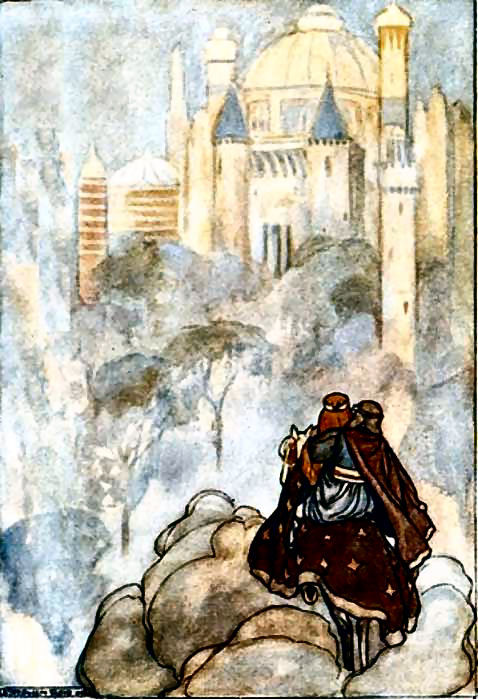
Oisín and Niamh travelling to Tír na nÓg (“Land of the Young" – an otherworld inhabited by the Tuatha Dé Dannan), illustration by Stephen Reid in T. W. Rolleston's ‘The High Deeds of Finn’, 1910
Public domain
Having said that we humans must die before we can get to the Otherworld, folklore, mythology and legends worldwide indicate that there are exceptions. There are an innumerable quantity of folk tales concerning people who have been ‘abducted’, kidnapped or simply wandered into ‘fairy-land’ or the Otherworld. In fact Shakespeare’s ‘A Midsummer Night’s Dream’ is a prime example. The modern day ‘alien abductions’ have the same roots.
These stories come from many different cultures all over the world and often involve absences during periods of earthly time that don’t correspond to time as it’s perceived in the Otherworld. This can work both ways, whereby the absence has been much greater than the time the individual has been missing from the earthly realm, or vice versa. Often romantic relationships with the Fae are involved, although some tales indicate no other motive than pure spite. Also, memory of the individual’s previous earthly life may have been lost upon return, or it could be the memory of the time spent in fairyland that’s missing.
This phenomena demonstrates and pre-supposes the ability to vanish from the primary world completely,‘body and soul’ so to speak. Not only that, but it also implies resurrection in the physical world - an ability normally reserved exclusively for Jesus. These incidents are exactly what Tolkien was referring to as Faërian Dramas or ‘Enchantments’ and which he described as being in a dream where some other mind is controlling a Secondary World “into which both designer and spectator can enter, to the satisfaction of their senses... Uncorrupted, it does not seek delusion nor bewitchment and domination; it seeks shared enrichment, partners in making and delight.” In other words a kind of heaven.
To all intents and purposes these ‘abducted’ individuals, who can go missing for great lengths of time before returning or never return at all, are effectively dead as far as the Primary World is concerned. The only official criteria they lack is that their bodies cannot be found as they are also in the Otherworld …Does that sound familiar to the multiple cases of disappearance discussed earlier?
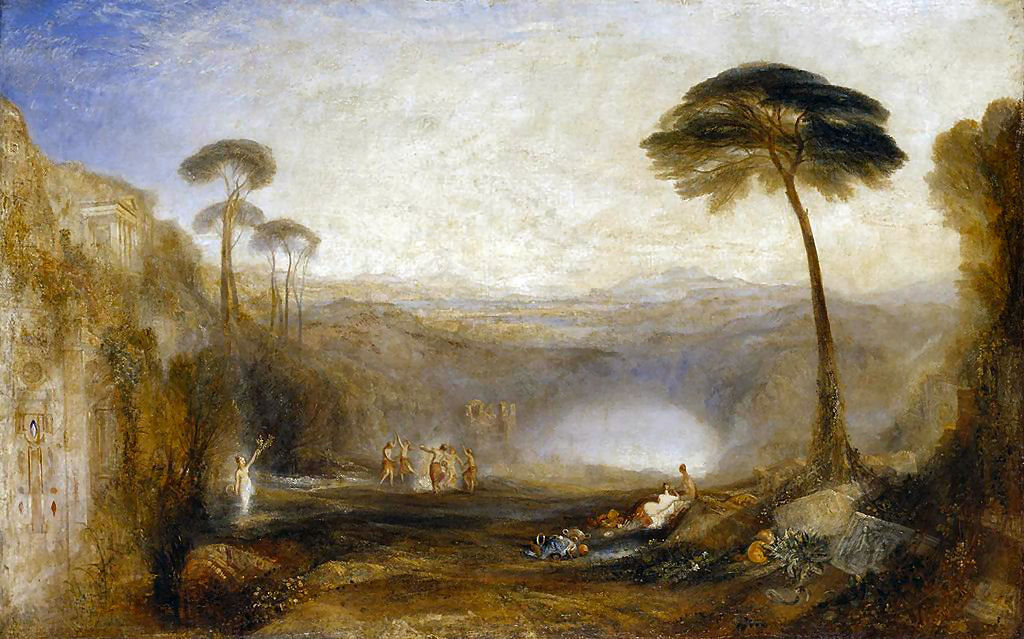
The Golden Bough incident from the Aeneid
J. M. W. Turner (Public domain)
In order to visit The Otherworld before the appointed time, it was often necessary to have an invitation. More often than not, this was in the form of a ‘token’, usually a silver branch, or a golden bough, from a sacred apple-tree and it would be given by someone from the Otherworld to whichever mortal they had granted the honour of a visit. These branches or boughs, would have blossoms and even fruit. Sometimes the ‘token’ was just a single apple, or the branch would produce music that made other mortals forget the person who was being invited. In any case, the apples provided food and drink for the mortal in question.
The Silver Branch was a feature of the ‘Celtic’ tradition whereas the Golden Bough was from the Classical, but both served the same basic function. The reasons for the excursions into the Otherworld, or Hades in the Classical instance, varied from romantic liaisons to full-blown quests to rescue someone or something – as discussed in relation to the ‘Preiddeu Annwfn', raid on The Otherworld by Arthur and his Knights. This also applies to the voyage of Odysseus across the deep-flowing Ocean to the land of the departed as related by Homer.
This apple business traces back to Norse mythology, “Iðunn (Old Norse: [ˈiðonː]) is a goddess associated with apples and youth. Iðunn is attested in the Poetic Edda, compiled in the 13th century from earlier traditional sources, and the Prose Edda, written in the 13th century by Snorri Sturluson. In both sources, she is described as the wife of the skaldic god Bragi, and in the Prose Edda, also as a keeper of apples and granter of eternal youthfulness.” Source
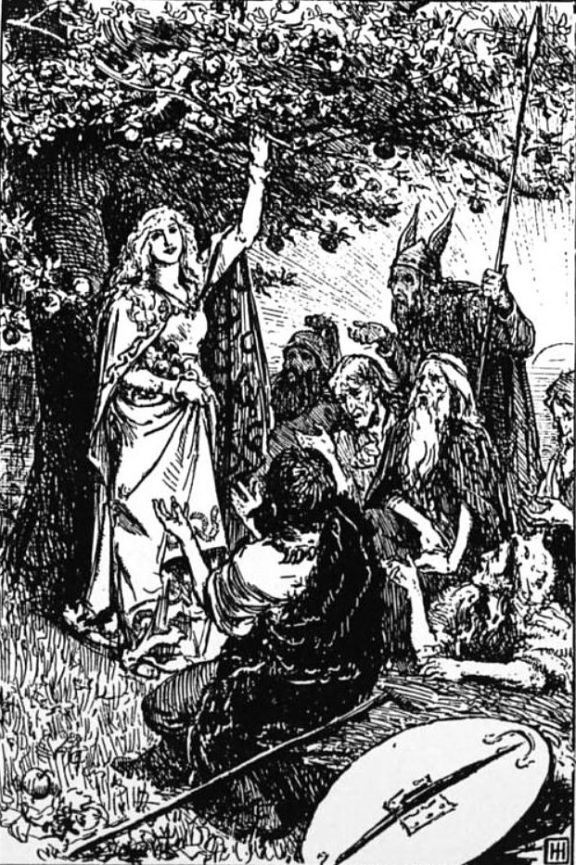
Idunn and the Apples of Youth (Illustration from ‘The Tragedy of the Norse Gods’ by Ruth J. Pitt, 1893. Artist George Percy Jacomb-Hood Public domain
Furthermore, “In Norse legend the food of immortality of the gods in Asgard was the apple. The Apple of the Hesperides....fruit of which Hercules and Perseus, son of Danae of the Brazen Tower, went in quest.” Mr Lewis Spence , in The Minor Traditions of British Mythology, tells us that the common apple tree reached Greece from the North. It was adopted by the Greek sun-god as especially sacred to him, and from the Celtic word 'Abal' an apple, the god derived his name Apollo. Avalon, Avallach and Avalloch are Celtic variations of the same word. Source: Rhys, Arthurian Legend.
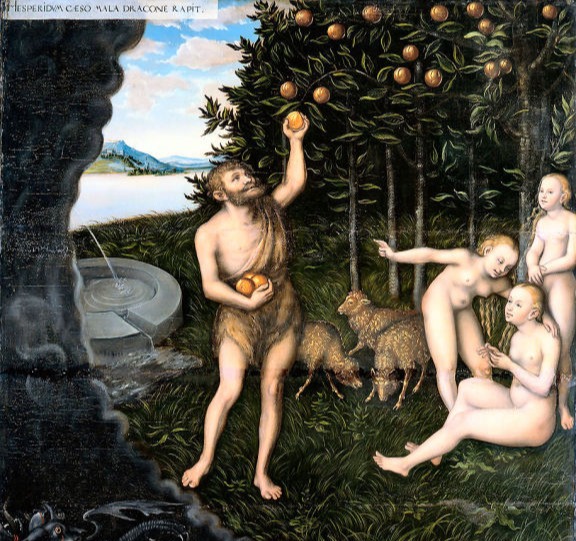
Hercules steals the Apples of the Hesperides
Workshop of Lucas Cranach the Elder, post 1537 Public domain
“The eleventh of Hercules' Twelve Labours was to fetch the golden apples of the Hesperides. The poet Virgil tells how when Aeneas escaped from Troy to Italy, the Sibyl told him that the only means of entering and returning safely from the underworld was to carry the fruit of the golden bough. In accordance with the cult of the goddess Diana at Nemi most authorities agree it is likely that the golden bough was an apple–branch.” Source
The Greek word ‘melon’ has a double meaning, which is either sheep or apple. Therefore, the Golden Fleece, which was the object the quest by Jason and the Argonauts was actually another quest for a golden apple.
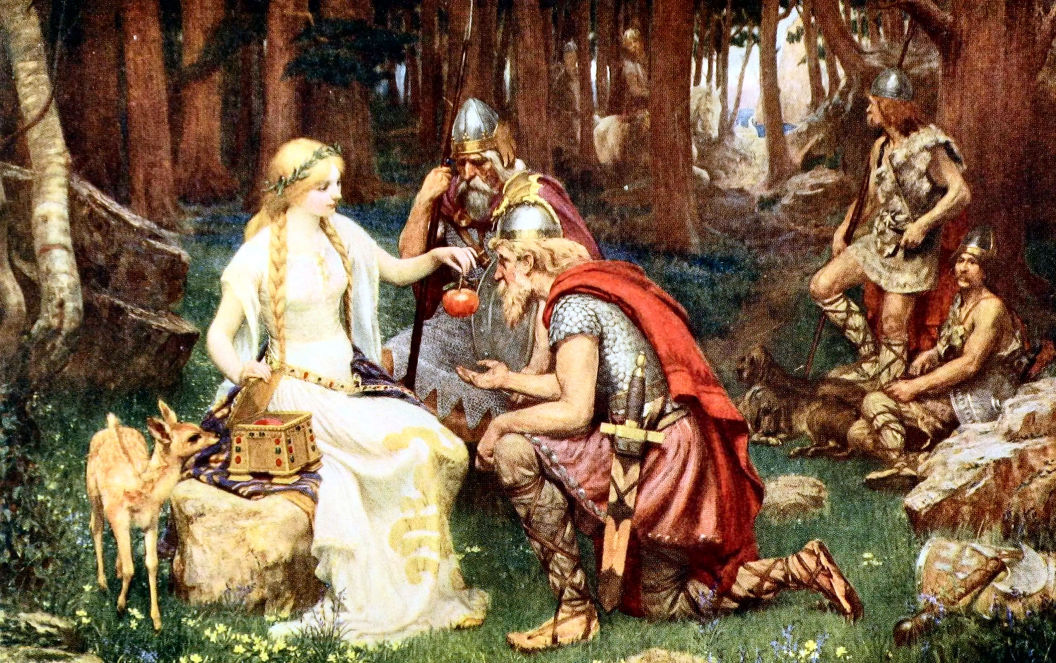
Public domain
The 'Echtra Condla', an Irish tale regarding a 1st century Irish prince, tells how he was invited by a beautiful Sidhe woman to the ‘Land of Heart’s Desire’. His father, the king, instructed his Druids to do all they could to prevent the prince from leaving. Meanwhile, the Sidhe woman gave the prince an apple as a parting gift. The prince ate the apple, which he never consumed as it simply regenerated, neither did he require any other food. (Reminiscent of the ‘Loaves and Fishes Miracle’ in the New Testament.) After a month the Sidhe woman returned in her boat of glass and the prince sailed away with her to the ‘Land of Heart’s Desire’. ‘Celtic and Scandinavian Religions’, Rev. J. A. MacCulloch.
It’s also interesting to note that, besides a close similarity in folklore, both the South West of England and Northern Spain share a very ancient and tasty association with apples and their trees in the form of cider - scrumpy in England or sidra in Spanish.
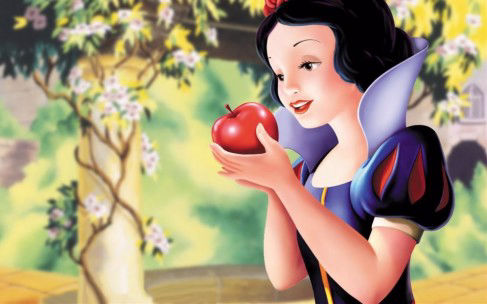
Merlin, or Myrrdin, is constantly associated with apples and apple-trees in early welsh poetry. He is also described as sleeping either in or under an apple tree in the Caledon forest. The Isle of Avalon is also known as the Isle of Apples. With this apple / apple-tree fixation and its link to the Otherworld, one simply can’t help drawing a comparison to another famous apple and it’s tree – the Tree of Knowledge in the Garden of Eden.

The Temptation of Adam and Eve, Joachim Wtewael, 1614
Source
I suppose everyone knows the story from Genesis whereby a serpent corrupts Eve into the infamous act of original sin by eating an apple from the tree of the knowledge of good and evil, which she then persuades Adam to have a nibble at. Just to clarify: God had forbidden them to eat the fruit from the tree and before they succumbed they were the only humans on God’s brand-spanky-new world.
Of course, even though it is not stated in Genesis, the serpent figure is identified with the Devil in exactly the same way as the Sidhe were identified as the serpents that St. Patrick drove out of Ireland and into the sea. The serpent symbol was also associated with the Druids and represented wisdom. The knowledge of good and evil definitely counts as wisdom.
The strange thing is though, the image everyone has of a serpent is that of a reptile with no legs, right? OK, so when God curses the serpent he does so with the magic spell of “upon thy belly shalt thou go.” But, being a serpent, surely it was already going ‘upon its belly’.
“The word for serpent in Hebrew is nachash, and like some English words (e.g. express or home), it can be a noun, or a verb, or an adjective:
“As a noun, it means serpent.
As a verb, it means to divine; the nachash means the diviner.
As an adjective, it means shining; the nachash means the shining one.” Source
It can also mean Snake or Dragon.
“Interestingly, in Biblical Hebrew there is a fascinating strong etymological connection between the ‘Nachash’ and supernatural forces. The Biblical Hebrew word for ‘sorcery’ or ‘witchcraft’ is… that’s right…the SAME as the word for ‘SERPENT’ – meaning ‘Nachash’!” Source
So, it could even mean ‘Sorcerer’.
Genesis Chapter 3, 22 “And the LORD God said, Behold, the man is become as one of us, to know good and evil: and now, lest he put forth his hand, and take also of the tree of life, and eat, and live for ever.” Who was he talking to? Who was he instructing to “Behold” and who were the ‘ones of “us”’?
So, God not only kicked them out of Paradise, but also cursed them and all of their descendants in various ways. He placed a Cherubim and a Flaming Sword at the entrance to Paradise to make sure they never returned… even though he hadn’t created any swords yet.

The Sacrifices of Cain and Abel, Mariotto Albertinelli, c. 1510
Source
A little while later, once Adam had ‘known’ Eve a bit better, along came Cain and Abel. However, Cain bumped his brother off, so that left three humans in the world. God cursed Cain “from the earth which hath opened her mouth to receive thy brother's blood from thy hand.” Please note the female personification of the earth. Then curiously, Cain exclaims, “Behold, thou hast driven me out this day from the face of the earth; and from thy face shall I be hid; and I shall be a fugitive and a vagabond in the earth; and it shall come to pass, that every one that findeth me shall slay me.” Genesis 4, 14.
…Every one that findeth him? There was only supposed to be Mum, Dad and himself in the whole world. Also, if you are mortal, you can only be slain once, not each time someone finds you. Given the situation, Cain could not have had any concept of ‘fugitive-ness’ or ‘vagabond-ity’ because he had no frame of reference for them. Why would he also say “in the earth” and not on it?
For me personally, there are so many Otherworldly elements to this story that it really makes me wonder if it was written by a bunch of those same monks. friars, scribes and bishops who came up with that dreadful nonsense about the Spanish invasion of Ireland. We have a tetchy god who creates, or ‘Enchants’ a kingdom into existence, which could easily be described as The Land of Heart’s Desire. There are apple-trees and apples that have a supernatural significance. In many ancient tales those who visit the Otherworld are warned not to eat or drink anything whilst they are there otherwise they won’t be able to leave. In this case Adam and Eve are given the same warning, but the consequence is the exact opposite. The serpent, or pagan druid sorcerer, is given the role of the evil tempter who cajoles Eve into eating an apple. The tetchy god throws them out of his Otherworld kingdom and places a Cherubim, or child-like fairy and a flaming sword at the portal to prevent their return. “Flaming swords have existed in legend and myth for thousands of years.” Source
It’s like a really bad copy in the ‘Celtic’ / Brythonic / Norse / Classic style concocted to promote the Judeo-Christian moral of the story – don’t go having anything to do with the Otherworld or anyone who offers you an apple – look what happened to Snow White. At the time it could have been written, around the 9th century, the symbolism or rather Otherworld references, would have had a significant impact upon all who heard the story.
In Tolkein’s essay, he mentions the same ‘Fall of Man’ event in relation to the serpent and Eve’s conversation with it:
“Many stories out of the past have only become ‘escapist’ in their appeal through surviving from a time, when men were as a rule delighted with the work of their hands, into our time, when many men feel disgust with man-made things.
“There are profounder wishes: such as the desire to converse with other living things. On this desire, as ancient as the Fall, is largely founded the talking of beasts and creatures in fairy-tales, and especially the magical understanding of their proper speech. This is the root, and not the “confusion” attributed to the minds of men of the unrecorded past, an alleged “absence of the sense of separation of ourselves from beasts.” A vivid sense of that separation is very ancient; but also a sense that it was a severance: a strange fate and a guilt lies on us. Other creatures are like other realms with which Man has broken off relations, and sees now only from the outside at a distance, being at war with them, or on the terms of an uneasy armistice.”
So then, what was the Genesis story all about? Was it an allegory to persuade the ‘pagans’ that they were to blame for the separation of man from nature and the Realm of Faërie? That they were culpable for the war that exists between man and the Fae because they broke the rules and ate the fruit of the apple-tree in The Otherworld? Does this account for the persistent belief that we are to blame for the departure of the Fae as discussed earlier? Was this the true ‘original sin’ – to accept an invitation to the Otherworld and eat a sacred apple? If so, then the Genesis story was an effective way of persuading pagans not to have any dealings with The Otherworld or the Fae ever again and making them feel guilty for it. So when and by whom was it really written?
“The Primary World, Reality, of elves and men is the same, if differently valued and perceived.” ‘On Fairy Stories’ by J. R. R. Tolkien, 1939.
This attempt at a definition may well change, as we don’t claim it to be determinate, we are still learning ourselves. There are Fae in our reality, our world. Our world is made up of different layers beyond those that humans can normally perceive or inhabit and wherein ‘Secondary Realities’ can be created. Our world, including all of the constituent ‘layers’ beyond our normal perception, is the Realm of Faërie.
Our world also has abundant connections to many different types and forms of Otherworlds, which may be considered as ‘other dimensions’ and are as complete as is our own world.
When any Secondary Realities created in our world become Otherworlds in their own right is another question… quest-i-on, quest i am not going on just at the moment.
Central to the theme of this entire discussion is the connection and interaction between mortals and immortals. The incarnation of an immortal into the mortal world is a concept exclusively claimed by Christianity and exclusively the prerogative of Jesus Christ, but like most things concerning Christianity, ‘they came late to the game’.
The Council of Constantinople in 553 declared that:
“Whosoever shall support the mythical doctrine of the pre-existence of the Soul, and the consequent wonderful opinion of its return, let him be anathema,’
This declaration indicates that belief in the doctrine of re-birth or reincarnation was widespread and popular enough to require an official ban.
“… the idea of re-birth which forms part of half a dozen existing Irish sagas, was perfectly familiar to the Irish Gael.” ‘The Literary History of Ireland’ by Douglas Hyde.
Furthermore, this idea also encompassed the belief that divine national heroes, such as the Tuatha de Danann or Sidhe, can live in our Reality as mortals on more than one occasion.
“There is no doubt that all the chief personages of this [Cuchulainn] cycle were regarded as the direct descendants, or it would be more correct to say, as avatars or reincarnations of the early gods. Not only are their pedigrees traced up to the Tuatha De Danann, but there are indications in the birth-stories of nearly all the principal personages that they are looked upon simply as divine beings reborn on the human plane of life. These indications are mysterious, and most of the tales which deal with them show signs of having been altered, perhaps intentionally, by the Christian transcribers. The doctrine of re-birth was naturally not one acceptable to them. … The goddess Etain becomes the mortal wife of a king of Ireland. … Conchobhar, moreover, is spoken of as a terrestrial god; and Dechtire, his sister, and the mother of Cúchulainn, is called a goddess. In the case of Cúchulainn himself, it is distinctly noted that he is the avatar of Lugh lamhfada (long-hand), the sun-deity of the earliest cycle. Lugh appears to Dechtire, the mother of Cúchulainn, and tells her that he himself is her little child, i.e. that the child is a reincarnation of himself; and Cúchulainn when inquired of as to his birth, points proudly to his descent from Lugh. When, too, it is proposed to find a wife for the hero, the reason assigned is, that they knew ‘that his re-birth would be of himself’ (i.e. that only from himself could another such as he have origin).” ‘Old Irish Tabus, or Gesa’ by Miss Eleanor Hull, 1900.
The Brythonic or Welsh tradition holds equally as many references to a lineage of reincarnating gods who are prominent heroes or rule as kings in the mortal world. Gwion is reborn as the famous Welsh poet Taliesin, son of the goddess, Caridwen. There is also the story of Gwydion who took the ‘Cauldron of Regeneration’ from the Otherworld and let’s not forget King Arthur, who, if you’re not already convinced that he was a god, is confidently expected to return in England’s hour of greatest need, just like Holger Danske from the Danish tradition, who was perhaps another incarnation of King Arthur.
Update: Holger Danske was a much later creation from the Charlemagne period. He was a paladin of Charlemagne and deliberately identified with Arthur, but after beginning as his enemy he later became a ‘hero' who slaughtered pagans in the name of Christianity.
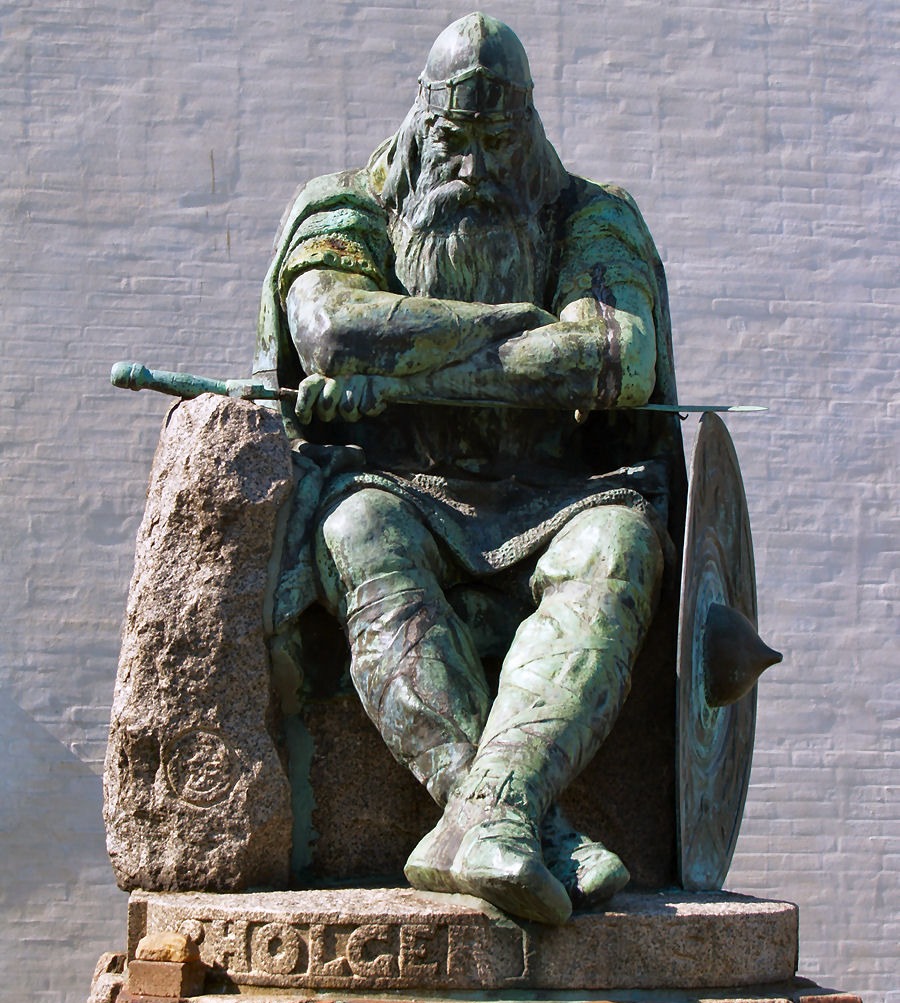
Statue of the ‘hero' Holger Danske at Hotel Marienlyst, Denmark
René Blumensaadt at da.wikipedia, CC BY-SA 2.5
The Greeks also had the same belief in the reincarnation of their gods. Alexander the Great was regarded not only as the son of Zeus, but as Zeus himself. Also many great Greeks were worshipped as gods whilst they lived, quite probably for the same reason.
So perhaps ‘The Divine Right of Kings’ is a distant echo from a time when kings were actually divine. It also explains claims of more than one Arthur, more than one Merlin, the very long lifespan of Charlemagne, why Jesus was also referred to as a ‘king’, why historical chronology is such a mess and why post-Christian monarchs and aristocrats go to such ludicrous lengths to validate their authority by claiming descent from those ancient divine kings.
It’s also important to consider that when we are speaking about reincarnation we are referring to souls, not to humans, elves, gnomes, cats, dogs, mermaids or any specific ‘race’. Therefore, the soul may reincarnate in any form it chooses; human, Fae, animal, etc

Moctezuma II, the Last Aztec King (Reigned 1502–20)
John Carter Brown Library Public domain
This has become quite a controversial subject unfortunately. It’s the often quoted theory that ancient cultures around the world have been visited by ‘White Gods’ in the distant past who acted benevolently as civilisers. The name derives from the ancient cultures themselves who described them as being gods who were white.
As you might imagine, this notion has been labelled ‘white supremacy’ both by those who oppose it and by those who wish to promote it. The Aryan Race proponents claim they were the White Gods. Religionists have claimed that they were early Christian missionaries, such as the Irish monks like St. Brennan, who would put to sea in a coracle and let God decide their fate.
“The British writer Harold T. Wilkins took the concept of the white gods the furthest, writing that a vanished white race had occupied the whole of South America in ancient times. Wilkins also claimed that Quetzalcoatl was from Atlantis.” Source
Of course, we can’t fail to mention the Ancient Astronauts involvement in this field and even Graham Hancock used it to demonstrate his universal worldwide ancient civilisation theory.
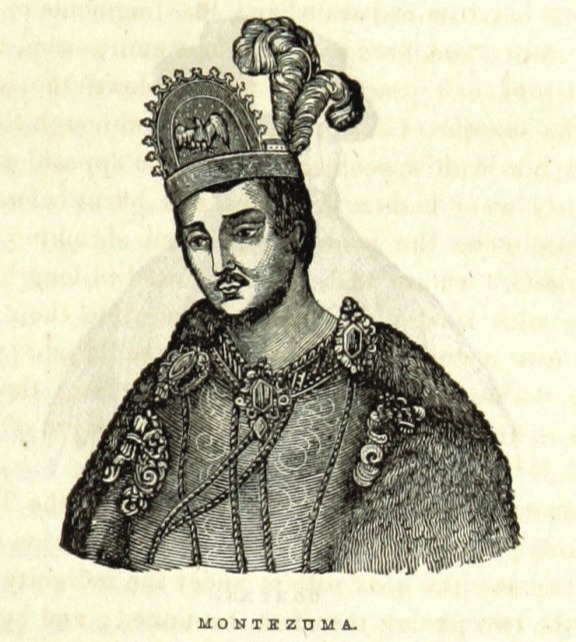
Montezuma II from ‘An Illustrated History of the New World’, 1873
John Ledyard Denison Public domain
Modern scholars throw scorn upon the whole idea and consider it “to be a post-conquest Spanish invention and that the ideas are based on pseudoscience.” (ibid.)
Apart from the Ancient Aliens gang, everyone else has, as usual, assumed that the White Gods were human. After all, these primitive indigenous people were uncivilised Godless barbarian heathens who have never heard of Jesus Christ. Their gods are nothing but pagan idols or mortal men with ideas of grandeur. Mind you, the Mormons think they were Jesus.
But. What if they were Fae, like the Tuatha de Danann. What if all those representations of White Native Americans were actually images of the Fae before they realised the nightmare the European colonisers were bringing down upon them and so promptly and literally disappeared.
There are a great many terms that include the word ‘Astral’. The Astral Plane, Astral Projection, Astral Travel, Astral Chart, Astral Body, Astralia, etc.
“Definition of astral: of, relating to, or coming from the stars.” Source
To interpret the Arcturus / Bootes information into a meaningful part of this Quest is going to require some serious effort. We’ve already mentioned that the mythology of Thailand places of all of its Thévadas or gods and goddesses, in the entirety of the visible heavens and all of the spaces in-between. In other words, in the Astral Plane - the Plane of the stars. This was a very widespread belief even in pre-Classical times.
It’s not necessary to get involved in all the fine details regarding Intermediate Astral Spheres and different levels and all that blah-blah-blah as there are hundreds of different theories promoted by as many different belief systems. Suffice it to say the one thing they all have in common is that the region between our world and the heavenly abode of the gods is populated by all manner of both good and bad entities. You could even call it ‘The Otherworld’ in its broader, all-pervading sense.
We have also seen how Zeus in the Greek tradition, placed gods and goddesses in the heavens as stars. In fact, just about every non-Abrahamic religion featured gods and goddesses who were depicted in the stars.
A favourite meme of the Ancient Aliens brigade is that all old civilisations claim to have been visited by gods who “came from the sky”. In order to establish their particular frame of reference, they then quickly present a landing pad for space ships. Occasionally Orion gets mentioned and lately Cygnus, but spontaneously it’s automatic to think of the blue sky and clouds upon hearing this mantra, but if instead one thinks of the night sky with all of the deities depicted therein, then a different scenario evolves.
Both Plato and Aristotle believed that the stars were not made from any of the four elements found on our world. They claimed they were made from a fifth ethereal element which was the same as the material of the human psyche. This accounted for the Astrological influence of the different stars and heavenly bodies upon human affairs. Needless to say, these ideas are scorned today as modern science treats Astrology as a joke. Except one chap; Percy Seymour, former Plymouth University astronomy lecturer, and member of the Royal Astronomical Society. He has two books; Scientific Basis of Astrology, 1997 and The Scientific Proof of Astrology, 2004, that both claim otherwise. It’s also relevant that Kepler was a teacher of astrology and Galileo was a ‘mathematicus’, a term which had a threefold meaning as referring to mathematics, astrology and astronomy. Newton was also a strong believer in the mystical and astrological symbolism of alchemy.
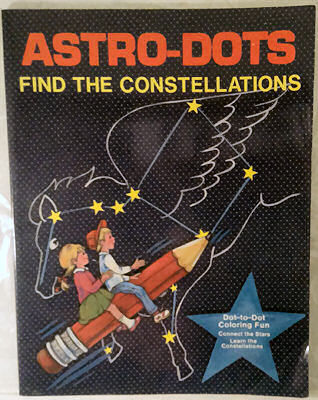
It seems then, that some of the greatest and most revered ‘scientific’ minds of the past believed in astrology. So what happened to turn it into the joke it’s considered to be today? Well, today’s scholars and academics consider themselves to be the highest evolution of man’s intellectual capacity. This implies that such ancient and primitive beliefs as astrology are the result of primitive intellects trying their best to make sense of a mysterious and unknown universe. They must imagine ancient people staring at the night sky, bored to death without TV, mobile phones and video games, amusing themselves by joining the dots of the brightest stars in the heavens. Then, one night, someone said, “Look! This is exactly like a man carrying a pitcher of water on his shoulder! Let’s call it Aquarius.”
If you actually look at the constellations with their dots joined, none of them bear any resemblance to their names. As for the detailed lists of characteristics associated with each sign of the zodiac and those of the gods and goddesses, how did such primitive minds ever conceive those? As Tolkien said regarding the personification of the natural force of thunder as the god Thor – which came first, the god or the thunder? In this case which came first – the astral dot-to-dot pictures or the deities and zodiac signs with their characteristics? Are we looking at this the wrong way around again? Tolkien also claimed that personality can only be attributed to something or someone by a person. If this is so, then who taught man about the personalities and characteristics of those deities, what their names were, the locations of the constellations that represented them and the different effects of their influences during the annual cycle? Did we discover these things from the incarnate gods and goddesses themselves?
Arthur was / is associated with Arcturus, The Bear, The Guardian of the North. In the poem ‘Preiddeu Annwfn’ discussed earlier, Arthur leads a raid on the North to rescue the Sun God and the Cauldron of Life, which have been bound in chains. In this case, it seems that the god came from the sky to perform his duty…or was it the other way around? “As above, so below” you could say.
Even if you dismiss the typical Mystic Meg type of horoscope, (which you may well be advised to do for, just as with everything else, Astrology has been corrupted over the more recent centuries,) Old Moore’s Almenac, which as been in publication since 1764, gives useful predictive information with regards to agriculture and fishing.
Do the stars or the gods and goddesses depicted in them, have an influence upon worldly affairs? Is the real reason that ancient civilisations built structures like Stonehenge, Carnac, Newgrange etc., so they could keep an eye on the gods and goddesses and be ready for whichever one they would be coming under the influence of next?
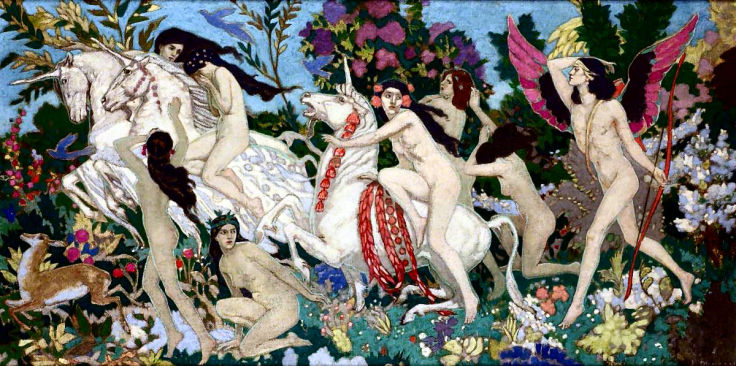
Unicorns, John Duncan, 1933
Public domain
These are primarily medieval encyclopedias of nature (mainly beasts) with a dubious origin that has been completely and utterly smothered by Christianity to the point where it’s now impossible to state where the information they contain originated.
“Around the seventh century, Isidore of Seville wrote his Etymologiae, an encyclopedia of which part was about animals, derived from the books of Classical authors such as Pliny the Elder. When the Physiologus combined with the Etymologiae and other texts, the book known as the bestiary was born.” Source
They became the most popular books after the Bible. Each description and illustration of a beast was accompanied by an allegorical lecture on Christian morality to indoctrinate the masses and demonstrate the wonder and order of God’s Divine Plan. They were even used by priests in their sermons.
The beasts included those you can probably easily guess plus; centaurs, unicorns, dragons, griffins, sirens, bonnacons, phoenixes, beluas, etc. At the time, none of these beasts were considered mythical or legendary - they were real. In fact, ancient maps show illustrations of such creatures in specific locations. They were so popular that they began to appear everywhere – in manuscripts, carvings in stone and wood, stained-glass windows, flags and in heraldry. Where did the idea or inspiration for these beasts come from? Was it the imagination of some pre-Christian author or poet? Did they belong to the Realm of Faërie and retreat back into it under the threat of advancing civilisation and the image that Christian morality had forced upon them? Maybe some of them were brought here from elsewhere.
There is a very odd rainforest in Puerto Rico known as El Yunque National Forest. Yunque is the Spanish adaptation of the Taino word ‘Yu-Ke’ which means ‘White Land’. In 1876, King Alphonso XII of Spain declared 10,000 ha (24,710 acres) of forested land in the Luquillo Mountains as a forest reserve. Then in 1898 the Spanish-American war happened. Even reading the ‘official’ Wikipedia version of events leaves you with the feeling that there was something very fishy about that war, but now isn’t really the time or place to go into the details. Although the war was primarily focused on Cuba, the result was that Puerto Rico (along with all the other previously Spanish holdings throughout the Caribbean) was ‘acquired’ by America. Then in 1903 President Theodore Roosevelt established the Luquillo Forest Reserve. During the 1930s, another 20,234 ha (50,000 acres) of forested land was ‘acquired’.
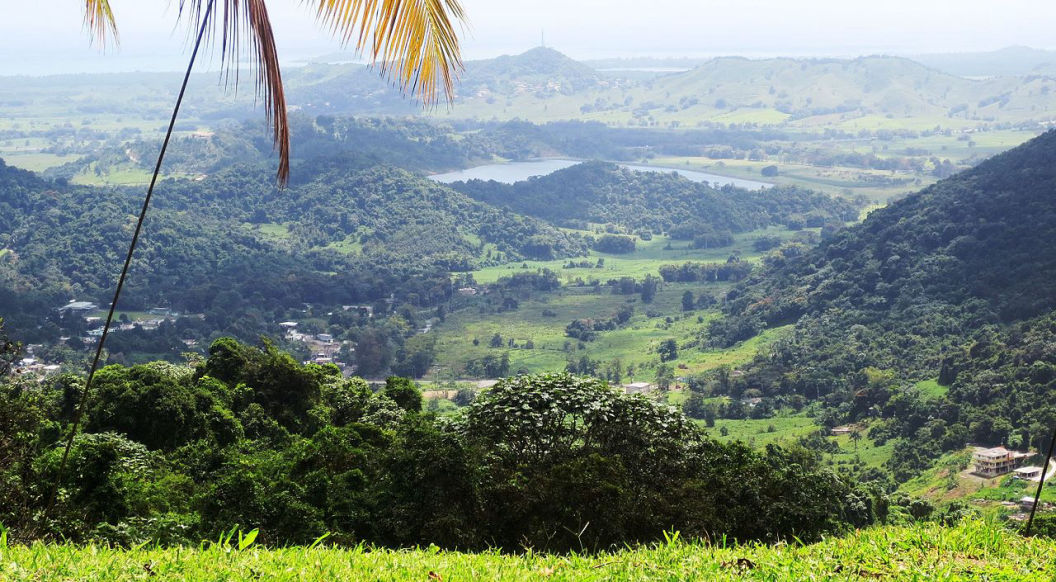
El Yunque National Forest, Puerto Rico
Bjoertvedt CC BY-SA 4.0
In 1939 the USDA Forest Service Tropical Forest Experimental Station (later known as the International Institute of Tropical Forestry) was established on the island. In the following year the El Verde Research Station was completed and long-term research “plots” began. From that point onwards you could almost guess the sequence of events – all manner of endangered wot-nots and biospherical reserves and Long-Term Ecological doom and gloom studies. It has also been designated as the Luquillo Experimental Forest, which is an odd name for a forest – did they have experimental trees or was there something more sinister going on? It is Americas only Tropical Rainforest, or rather ‘acquired’ Tropical Rainforest, so they have to get their money’s worth.
So, a nice place to go for a picnic you might think. Perhaps, but there’s not much of it that you are allowed to see.

El Yunque National Forest The light grey area is an exclusion zone
Source
Access to the forest is by specific permission. Trekking or hiking is only permitted on foot and within strictly confined boundaries. The visitors centre is called ‘El Portal’, which is just about the most appropriate name they could have given it.
Before we continue it’s necessary to digress a little. In Peru there is [update: was] a radio station producing a 3 hour show on Saturday’s and Sundays called ‘No Estamos Solos’ (We are not Alone.) No disrespect to Peru, in fact quite the opposite, but the show is comparable to the very early Art Bell radio shows, if anyone still remembers them before that other ...bloke took over, the Noory person. The first hour consists of people phoning in and sharing their experiences. Following that there are discussions – some about the usual ‘Alien Agenda’ type themes, but often the callers are allowed back afterwards and they simply tell it like it is. These shows get to Puerto Rico and Puerto Rico gets on the shows.
Turns out that people do get into the exclusion zone in spite of there being a military presence in the area – a fact which is excluded from the guide books. Besides the El Portal visitor’s centre, there are rumoured to be three ‘inter-dimensional’ portals in the forest. As well as the usual ‘lights’ in the sky, there have been literally hundreds of reports of encounters with all manner of Fae and mythical beasts – in particular gárgolas or gargoyles. These creatures are reported to be just as scared of us as we are of them – no one has ever been harmed by one or by any other being they have encountered. Two were once discovered fighting with each other, but they quickly flew away when disturbed.
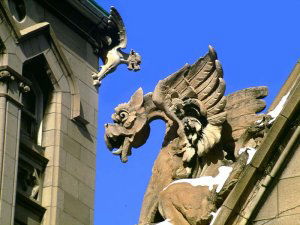
Gargoyles
Source
“They appear in architecture in ancient Egypt, Greece, Rome, as well as on Etruscan buildings. The oldest known gargoyle is 13,000 years old and located in modern day Turkey – it is in the form of a stone crocodile. The ancient gargoyles did not ever take the form of chimeras or fictional beasts but were modeled instead on native animals.” Source
So, it wasn’t until Christian times that the weird chimera type of gargoyles began to appear as adornments on religious edifices. More recently Disney have made a film about them and there’s also been a TV series. All reasons enough for some severe raising of eyebrows. Combine that with the facts that; Christopher Columbus went straight to that very area in 1492, that Puerto Rico is the southern tip of The Bermuda Triangle and that the Americans were extremely keen to gain control of it at the very beginning of the 20th century, then your eyebrows will be in danger of flying off.
As mentioned earlier, the Peruvian Radio Show “No Estamos Solos” is, sorry was, a valuable source of information regarding the presence of the Fae in that part of the world. The broadcasts have fortunately been saved to this YouTube Channel.
[UPDATE: As of April 2022 the ‘No Estamos Solos' channel has been removed from Youtube and the radio show cancelled, in spite of it being the most popular show on that station. Obviously, normal people telephoning in their experiences were impossible to control.]
[UPDATE: As of July 2022 Anthony Choy, the presenter of ‘No Estamos Solos', has opened a new channel on YouTube and is continuing the show under the same format. It is also possible to find old episodes by searching for ‘Anthony Choy' in the YouTube search facility.]
Via the YouTube Settings ‘Cog’ icon it’s possible to select ‘auto-translate’ from Spanish into any language you require and also to slow down the speed (0.75 is advised.) Mind you, sometimes the audio quality of the calls confuses the subtitles.
You will hear of more portals and also doors that apparently lead straight into solid rock. There are gnomes, elves, fairies and two metre tall beings of light with wings. Encounters with telepathic humanoids who can change their size at will. Accounts of relationships with sirenas or mermaids are common, even in inland rivers and lakes. There’s also reports of magnetic and acoustic anomalies, ‘shadow people’ and let's not forget the gargolyes mentioned earlier.

Mermaid by John William Waterhouse
Public domain
In his ‘’The Nature of the Beast’’ series of articles, Felix also discussed the Fae, along with UFOs, Miracles and Apparitions. He focused on The Archons – supernatural entities as defined by the Gnostics – and their influence and effect upon humanity over the ages. This obviously has a parallel to what’s being discussed here. So, I’ll hand the keyboard over to him so that he can try and talk his way out of that one… sorry, I mean clarify the situation.
Thank you Will, you cheeky git. Seriously though, the Nature of the Beast articles were written some two years ago now and right at the outset of the pandemic, so you could say, “from a dark place.” Ideas mature, change and develop – which is a good thing. That’s why I am very grateful to Will for creating this website as it gives us the opportunity to update and rewrite previous articles rather than allowing them to become stagnant and irrelevant.
There is indeed a parallel between the two articles. The previous ‘Nature of the Beast’ series approached the subject from a different point of view and focused upon the negative entities within The Realm of Faërie and the history of their interaction with humanity. This latest article was Will’s brainchild and he has exploded the overall theme beyond my wildest imaginings. I don’t see it as being incompatible with The Nature of the Beast series, but as an extension of it. The Archons obviously have their own territory within The Otherworld and are probably quite high up in the hierarchy of negative entities, if such a thing exists. The other factor to consider is that the characteristics and ‘personality’of The Archons depends upon accounts from one specific source – The Gnostics – and we have seen clearly in this quest how different cultures have different names and assign slightly different roles to what were basically the same entities. Whilst it may seem as if all of the supernatural antics described within The Nature of The Beast series were ascribed to The Archons, although that was never my intention, this article makes it very clear that there are other ‘denizens of the invisible realm’ equally capable of such shenanigans. Fortunately, thanks to Will, I have the opportunity to revise the previous series and correct that false impression.
Now it’s back to Will in the studio…
Thank you Felix. Armed with a good definition of Faërie, as provided by J.R.R. Tolkien, our Quest began with a visit to modern day Iceland where contact with the Realm of Faërie still survives. Where the rock and stone dwellings of the the Álfar and the Huldufólk are treated with reverence and respect to the point of being a consideration in the construction of roads and buildings.
Then we examined the information and theories outlined in the book ‘The Farfarers’ by Farley Mowat. This involved the ancient population of the British Isles whom Farley Mowat referred to as The Albans. He described them as a non-aggressive, peace-loving people who preferred to simply get out of the way rather than fight invaders. He suggested that they were forced ever westward to Iceland, Greenland and Vinland by the invading Vikings. We saw that the area of the Arctic Circle is full of stone structures that are identical to the rock dwellings of the Icelandic Álfar and the Huldufólk. Maxresde highlighted how the original Arctic Dorset Culture were described by the Eskimos as being very shy and non-violent, preferring to just move away whenever they were confronted by the newcomers.
Then we met the Peti and the Papae of the Northern British Islands, who’s description bears little resemblance to those of human beings and who simply disappeared. There was also the Finns who were known in the Shetland Islands, but who seem to have been of Norwegian origin as the Finnar or Saami. They still live in the northern Finnmark region of Norway and were regarded as great sorcerers with the power to control the weather, travel great distances in magical trances and shapeshift - just like the Tuatha De Danann of Ireland. They have a long history of persecution by Christianity and have become more and more marginalised over the centuries.
We respectfully proposed an alternative conclusion to those of Farley Mowat regarding the Farfarers material, whereby rather than emigrating each time they were threatened with invasion, the indigenous people simply and literally disappeared. This would be possible due to the fact that they were either Fae or humans under the protection of the Fae.
Our next task was to examine well known examples of historical disappearances from this new perspective. We cited the Spanish colonisation of the Americas where Columbus everywhere encountered peace-loving, non-violent, generous native inhabitants. We heard how the second wave of conquistadors found nothing but empty villages and we examined various excuses for the disappearance of (a claimed) more than fifty million people.
We hear how there are Fae comparable to the Irish Gentry and ‘people of peace not just in Yosemite Valley, but right across North America. Images show native Americans with Caucasian features and we ask if these were actually images of The Gentry – the people of peace – before they were forced into hiding by the onslaught of European colonisers.
Other famous disappearences were then recalled; The Bermuda Triangle phenomena, The Maya, The Roanoke Island Settlers, The Indus Valley Civilisation, the Easter Islanders, Cahokia, Angkor Wat, The Lost City Of Petra, The Olmecs, El Dorado and The Mandan.
In spite of Mr Tolkein’s warning, we then attempted a deeper examination of the Realm of Faërie. We began with a general discussion of Folklore and then moved on to demonstrate the universality of interaction and relationships with the Realm of Faërie throughout different cultures.

The Fairy Queen, Gilbert Williams
Source
We began with the The Mouras and Mouros of Northern Spain and Portugal. Once again we discovered an elite class of Fae known as the Mouros Encantados, who appear to be benevolent protectors. Their close neighbours, The Basques, followed and displayed many similarities. The Basques were heavily persecuted by The Inquisition.
We then interrupted our broadcast to bring you a public service announcement concerning the dangers of Christian monks, friars, scribes and bishops who meddled, twisted, butchered and generally interfered with all of the original material concerning ancient history in all Christianised lands and turned it into mythology and legends.
We then resumed our Quest in Ireland, home of The Sidhe and the Tuatha de Dannan. We described how even the early Christian monks, friars, scribes and bishops had to concede that they were a separate race to humans. The role of the Tuatha de Danann as immortal gods and goddesses with a close relationship to humans and a strong interest in and influence upon human affairs is very evident. The Fomorians appear as another Fae race who are the traditional enemy of The Tuatha de Danann. St. Patrick is shown to have been a Christian priest who infiltrated the Druids and then used their own knowledge and powers against them. The Christian monks, friars, scribes and bishops replaced all of The Tuatha de Danann deities with Jesus, Mary and some assorted Saints and then reduced them all to mere mortals.
We then skipped across the Irish Channel to England and Wales. Great lengths were taken to show that King Arthur, his original Knights, Merlin and his wife (or wives,) are the equivalent of the Irish Tuatha de Danann. Arthur as an incarnate god may well have visited the mortal realm more than once. As an immortal god he could have guided and influenced mortals. Consideration was given to whether Arthur was a ‘sun-god’ or an ‘astral’ god in his guise as Arcturus, The Bear and Guardian of the North.
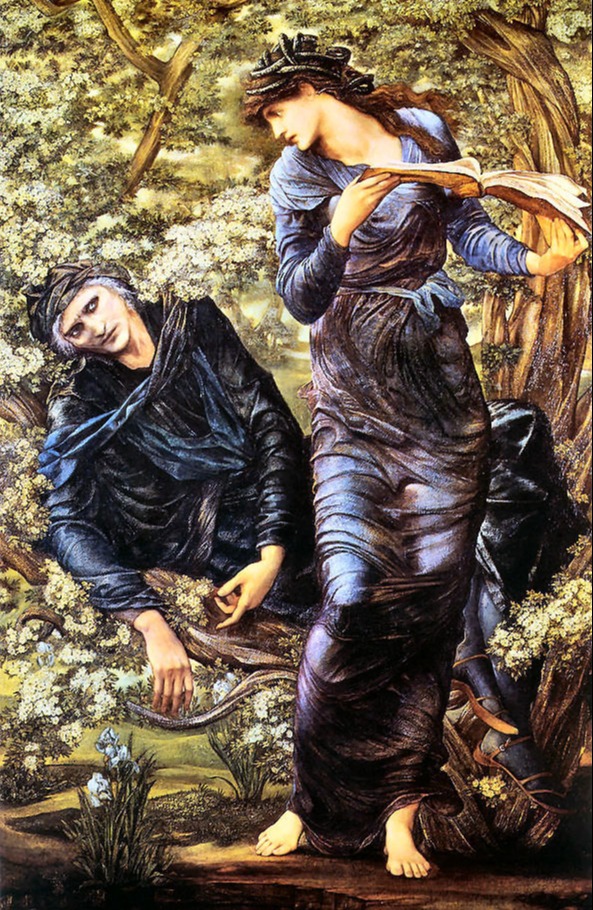
The Beguiling of Merlin
Edward Burne-Jones
Public domain
We then briefly mentioned comparable Fae traditions in other parts of the world, which makes the whole ‘Celtic’ categorisation rather redundant. The list includes; the Arunta tribes of Central Australia, the People of the Melanesian region, the Amazulu people of Africa, Native Americans, the Vedic Indian traditions, those of the Malay Peninsula, the folklore of Thailand, the Iranians, Arabs and Egyptians, the Greeks (of course), the French, Italians, Germans, Scandinavians, Swiss, Romanians, Albanians, etc.,etc. Oh yes and Iceland, which is where we started.
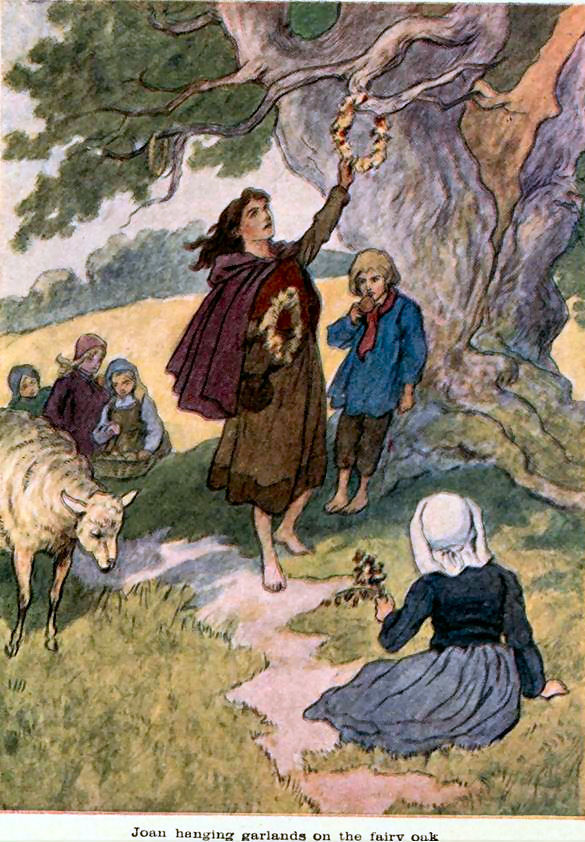
Joan of Arc hanging garlands on the Fairie Oak, illustration by J. Jellicoe, 1906
From “The Story of Joan of Arc” by Andrew Long Public domain
Joan confessed to interaction with the Fae
Our Quest then led us to attempt an explanation of The Otherworld. We located it within the same bounds as those of our own world, although illusive and permeating all material objects. It is not an exclusive domain to anyone race of the Fae, but each one has its own territory or kingdom – this includes demons and negative entities. It also includes human souls who have passed over from this life. Gods, such as Arthur, as the ruler of The Otherworld, can command all of the spirits within it. Tolkien's concept of ‘Enchantment’ was introduced and linked to human expectations of ‘reality’ in the world beyond this one.
The ability to enter The Otherworld without having to wait for the death process was then discussed. Abduction and invitation were cited. Particular reference was made to the prevalence of silver apple-tree branches, golden apples and golden apple-tree boughs as being invitations into The Otherworld as well as sustenance for the journey. These tokens are common to many traditions including the Old Testament expulsion from the Garden of Eden story, which bears a striking resemblance to tales of the abduction of humans to The Otherworld to the point where we questioned its claimed authenticity.
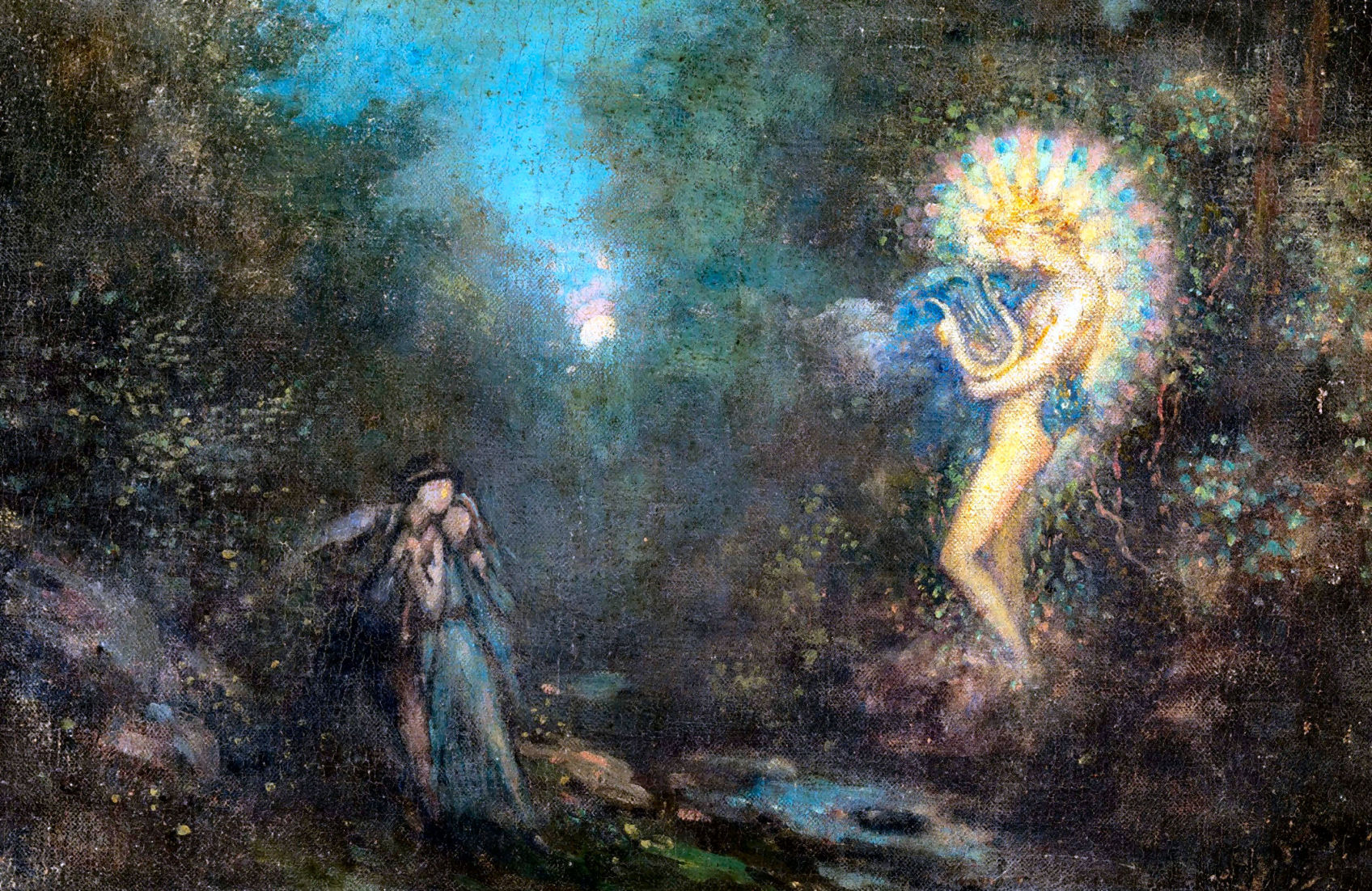
Landscape with a Couple, and a Spirit with a Lute
George William Russell Public domain
We then examined the relevance of Rebirth and Reincarnation to our Quest and discovered that it was a core belief of the pre-Christian traditions that even survived within Christianity for a short time until it was outlawed. These beliefs didn’t only apply to humans, but more importantly, to the incarnation and reincarnation of divinities into human form – no different to the ability ascribed to Jesus by Christians or the ability of any soul to reincarnate into any form it chooses.
The persistent and widespread concept of ‘The White Gods’ was then brought to the fore and linked to the Tuatha de Danann type races of Fae deities who behaved benevolently acting as civilisers and protectors to a great many ancient civilisations.
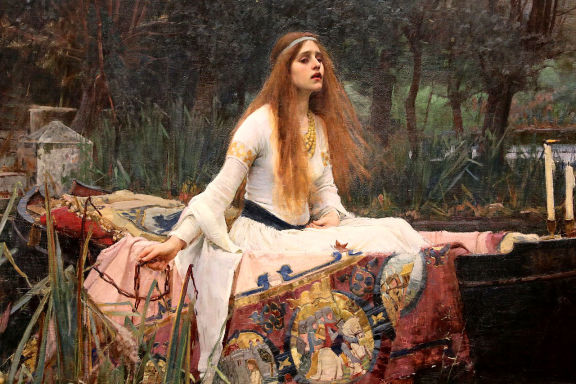
The Lady of Shalott by John William Waterhouse
CC BY 3.0
We then took on the daunting task of trying to make sense of the ‘astral’ elements encountered during our Quest, including the depiction of gods and goddesses in the constellations and the relevance of astrology. We examined Bestiaries and the mythical beasts portrayed therein and then presented reports of such creatures and many other curious things in the El Yunque National Forest of Puerto Rico - which is the southern most point of The Bermuda Triangle.
Finally we nipped across to Peru to highlight the astonishing amount of reports concerning interaction and encounters with the Fae and related curious phenomena.
“Yes,” I hear you say, “We know all that, because we’ve just spent the best part of a week reading it. Now what?” Well, now we congratulate you on making it this far into the Quest and we thank you most sincerely for your patience and perseverance.
We are very much aware that this is an extremely radical and completely different way of looking at not just our history, but also at our reality. It will be unacceptable for many and utter nonsense for many others. As a race, we have spent so long in a state of arrogant isolation we may never be able to break out of it.
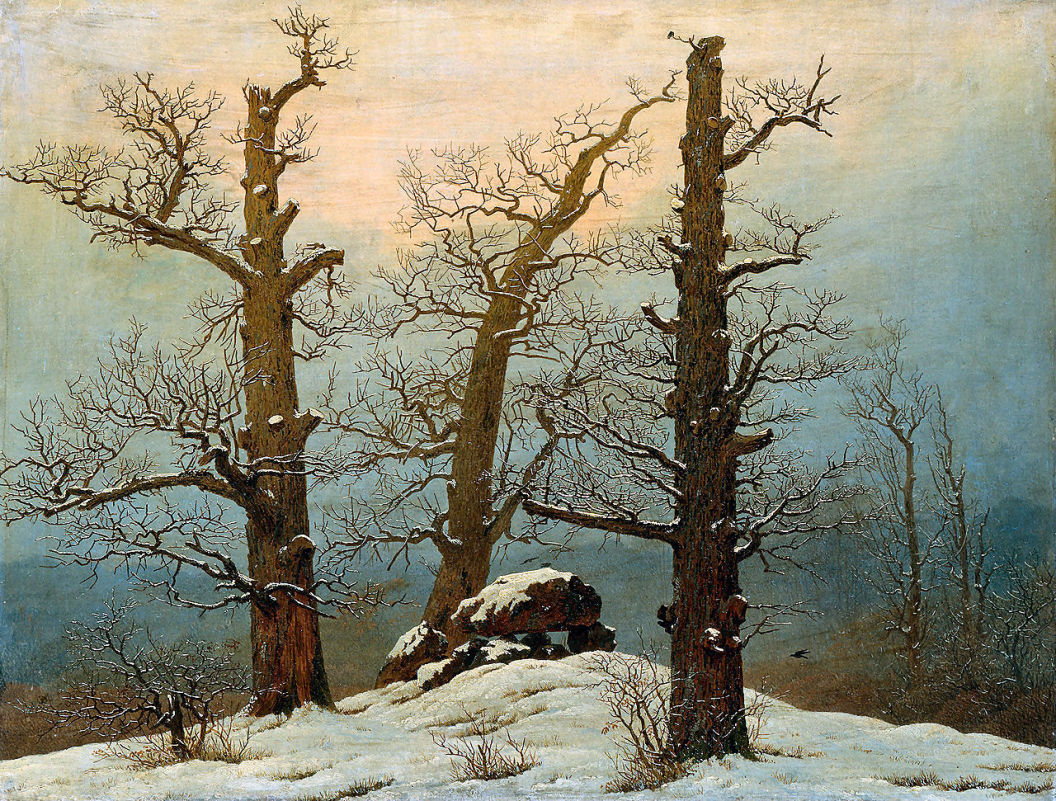
The cover illustration from a modern version of Mary Shelly's 'Frankenstein'
A classic tale of isolation. Caspar David Friedrich Public domain
“It is a curious result of the application of evolutionary hypothesis concerning Man’s animal body to his whole being, that it tends to produce both arrogance and servility. Man has merely succeeded (it seems) in dominating other animals by force and chicane, not by hereditary right. He is a tyrant not a king. A cat may look at a king; but let no cat look at a tyrant! As for men taking animal form, or animals doing human things, this is dangerous indecent nonsense, insulting to Herrenvolk. But strong or proud men talk of breeding other men like cattle, and for similar purposes. For a self-chosen Herrenvolk always ends by becoming the slaves of a gang, a Herrenbande.” Tolkien ‘On Fairy Stories’, 1939.
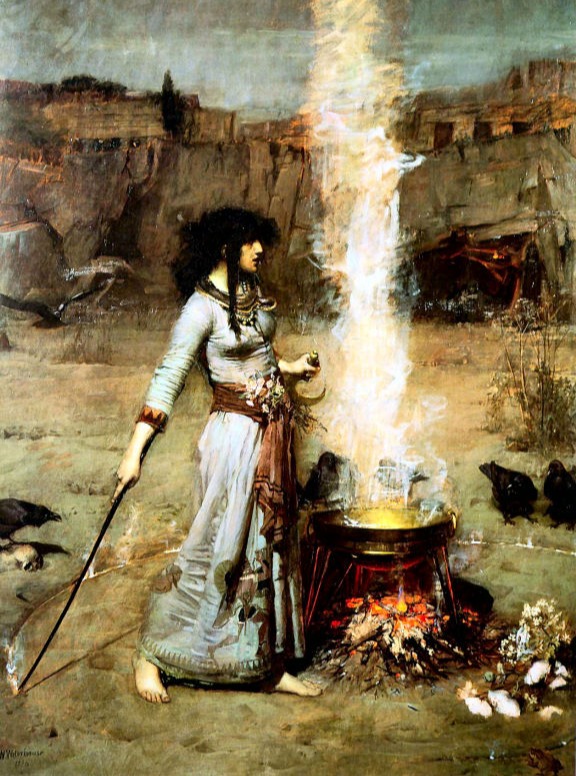
The Magic Circle, John William Waterhouse
Public domain
It’s almost as if we were ‘Enchanted’ long ago so that we switched illusions and began living one we never wanted – one that some other mind or minds is / are weaving. Perhaps in the great astrological scheme of things there came an opportunity for a race like the Fomorians to take control of The Realm of Faërie – for our world is also a part of The Realm of Faërie even if the vast majority of it appears lost to us. Maybe all of the ‘mad as a bucket of frogs’ Kings and Queens we’ve had since then are all incarnations of that Fomorian-type race. All of the psychopathic politicians and all of the leaders and creators of all of the religions that have blinded us to our true place within a vast and magnificent community are either of the same source or their puppets.
As someone very close to me pointed out – if the natural state of affairs is one of balance between the forces of good and evil, then whenever one becomes more dominant than the other, the opposite must increase to maintain the equilibrium. We are now clearly in the situation of an imbalance, whereby the force of evil outweighs that of good. If these cycles are reflected in the language of the stars or of the Gods – astrology – then the signs have been there for some time now that the balance will be restored and the forces of good will overcome those of evil. The battle for this equilibrium takes place throughout the entire Realm of Faërie, not just in our small part of it, but we must do our bit.
By far the greatest impact upon The Realm of Faërie was the infiltration of and subsequent sub-summation by Christianity. To infiltrate or gain a foothold in a competitive market, it’s necessary to promote your product in a familiar and recognisable package. Hence the marketing of Jesus as an incarnate god and a king who could perform supernatural feats and even cheat death. His mother Mary, who’s name is very close to Mari, the Mother Goddess of the Basques, was also an essential ingredient, as the successful takeover of the ‘pagan’ belief systems required a Mother Goddess replacement. Initially, the salesmen, or rather early saints, did not hesitate to match paganism in conjuration for conjuration, invocation for invocation, curse for curse, spell for spell. Many of the ‘pagan’ philosophies were carried over just long enough to secure market leadership and then they were declared heresies. In the process the Fae were systematically demonised then exorcised, the deities mortalised, while history became mythologised and falsified. Some people might call this a ‘Reset’.

Spirit of the Night, John Atkinson Grimshaw
Public domain
Whilst we did cover the colonisation of the Americas in some detail in Episode One, there were certain aspects we decided to leave the discussion of until this point in the hope that they might be better understood.
The mainstream version of Columbus’ voyages and the conquest of ‘The Indies’ is full of holes, most of which are well documented. The choices for true identity of Columbus is a lottery, with many different possibilities. We would like to propose another based upon everything that has been presented here so far.
It begins with the name – Christopher Columbus. If he was still alive today he would not recognise that name. During his life and in the country from whence he sailed to ‘The Indies’, he was called Cristóbal Colón. His children and ancestors all carried the last name Colón. Colón also never wrote anything in Italian, he only wrote and communicated using Latin and Spanish.
Much is made of the fact that the name Christopher or Cristóbal, means ‘bringer of Christ’ or bringer of Christianity, to be more precise. Everyone ignores the surname ‘Colón’, however. Colon as in colonización, which is the same word in English – colonisation, colonise, colony, colonial, etc.
Could it be then that Cristóbal Colón is not a name, but a title? “The Bringer of Christian Colonisation.” Like William the Bastard (later Conqueror), Alexander The Great, Vladd The Impaler, Caesar Augustus, Genghis Khan, etc. Also Saint Columba was an earlier Bringer of Christian Colonisation to Scotland.
Let’s not forget that the native inhabitants of ‘The Indies’ recognised Cristóbal Colón as a god when he arrived. Could this be another ‘King Arthur’ situation whereby the illusive historical figure of Christopher Columbus was actually an incarnate deity, although one of the Fomorian-types?
The account examined earlier by Bartolomè de Las Casas concerning ‘The Destruction of the Indies’ is not by any means the only version of events. Others are far more complicated with convenient alliances that are later broken and with much heavier and highly effective resistance from the natives – who are portrayed as having been much more highly developed than in Las Casas’ tome, although their eventual capitulation and disappearance still occurred, but perhaps not to the exaggerated degree proposed by Las Casas.
Neither Felix nor I get involved in the oh-so-fashionable debates concerning chronology – how the timeline is wrong, how we’re missing hundreds of years, how true history only really began last Wednesday. To us it’s all just numbers. It’s the events that are important, if we can sort those out then the numbers will take care of themselves. Similarly, we don’t find any sympathy, or evidence, for the popular, although vaguely defined, ‘Reset’ theories. As for worldwide cataclysms and Mudfloods, well, they are just not very convincing. The Tartaria ‘meme’ is also another theory we have considered, even with initial enthusiasm some 6 or 7 years ago. However, it’s now out of control and for us has lost all credibility and meaning.
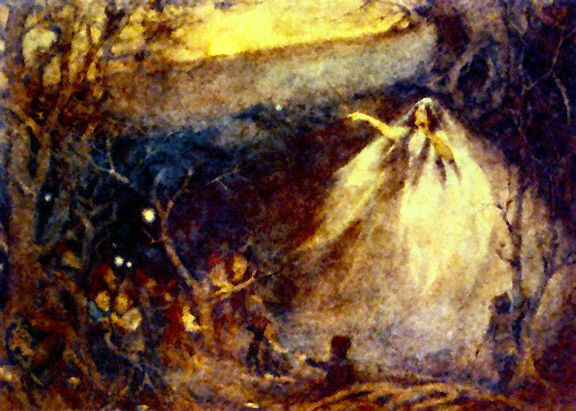
Queen Mab, Henry Meynell Rheam
Source
All of these ‘trending’ scenarios don’t really change anything fundamental. They attempt to show what might have been hidden in our past, what lies we may have been told, but at the end of the day we still end up in the same situation that we were in before we knew about the Mudflood, the Catastrophe, Tartaria and the Reset. This new proposal of ours seeks to show not only what we have lost and the lies we have been fed, but that it’s all still there waiting for us to reclaim it.
Application of this point of view to other areas of our ‘history’ may well help explain events that have appeared inexplicable so far, like the Marie Celeste. No, seriously though, maybe the American Civil War somehow involved the ‘cleansing’ of pockets of resistant Fae and the humans they were protecting? There could have even been some Formorian types already installed in parts of the Americas. Perhaps its relation to the Circassian Genocide mystery can also finally be explained. Maybe the Russian ‘Old Believers’ knew about the Fae? The modern phenomena of Clones and Doppelgängers could also be explained by the centuries old ‘myth’ of Fae with shape-shifting abilities.
There are also many more avenues to explore, such as the Gower Peninsula in Wales and its ‘invasion’ by the Flemings. The Channel Islands, which are a few kilometres off the northern French coast, right next to Normandy in fact, are another riddle waiting to be solved – and an important one. They have a long history of interaction with the Fae and many ‘Fairy Preserves’, (not jam or chutney, but territories) such as Ringforts and a network of tunnels running under the islands. There’s even a portal to The Otherworld on Guernsey. During WWII the Germans occupied the Channel Islands. Vast amounts of resources were spent on fortifying and defending them, right up until the very last moment of the war. It makes you wonder what the Ahnenerbe had discovered about the place.
Combine this with the apparent ‘facts’ that Columbus sailed directly to the Bermuda Triangle area in the Caribbean and that the USA went to great lengths to ‘acquire’ the El Yunque National Forest on Puerto Rico, then it looks like control of the various Otherworld locations is a prime objective for the forces of evil just as it is / was for the forces of good. Both the Channel Islands and the Isle of Man have now become tax-havens and playgrounds of the rich. In fact one of the smaller Channel Islands has been ‘acquired’ by the Barclay brothers and now has its own ‘no-fly’ zone and international waters. They are now attempting to acquire the main island of Sark by fair means or foul. The Arctic and Antarctic are both prime examples of Otherworld locations that have been secured as strictly no-go areas.
You may remember that Thomas F. O'Rahilly, a noted Irish scholar, claimed that one of the purposes of ‘The Book of the Taking of Ireland' was to “manufacture pedigrees into which the various dynastic groups could conveniently be fitted.” This is definitely an area that could yield some important information. The book claims that following the defeat of the Fomorians by the Tuatha de Danann, they were not banished but given a part of Ireland - the province of Connacht - to rule over. Furthermore, some of them then later married into the Tuatha de Danann. This sounds highly unlikely and contradicts other sources. If Thomas F. O'Rahilly is correct then this is is exactly what he was referring to when he spoke about “manufactured pedigrees," legitimising a dynasty's right to govern or rule through a false ancestry. This has happened in may other countries all over the world and it would be very revealing to find out exactly who those false dynasties were, or indeed still are...
Anglo-Norman Irish dynasties
Dynasties of Ireland
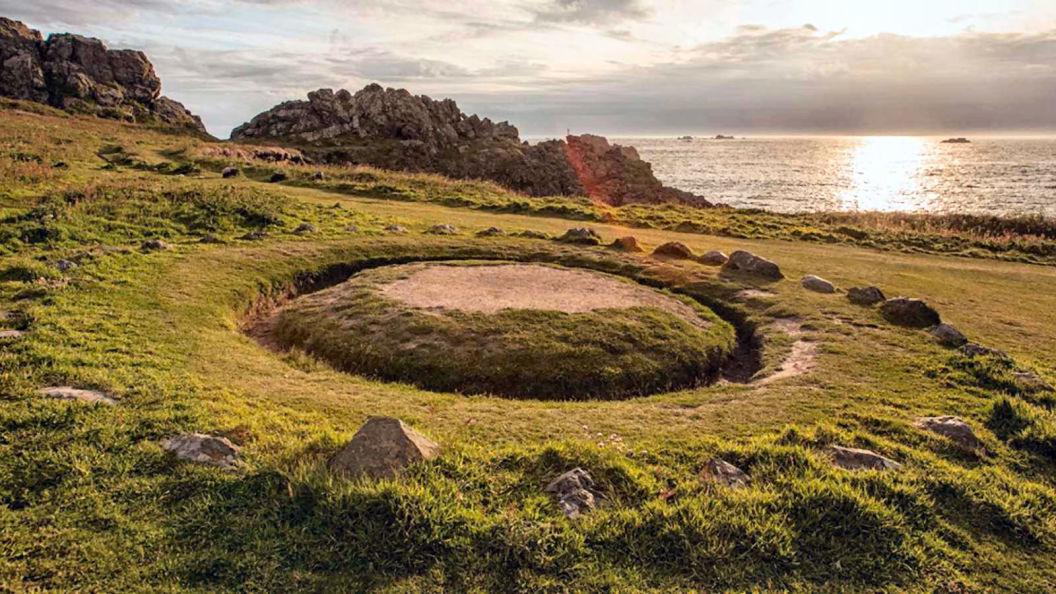
The Fairy Ring, Pleinmont Guernsey
Source
Finally, a brief return to the M18 motorway in Ireland mentioned in Episode One is called for. You might recall that the motorway had been constructed right through a fairy ringfort and that there were an extraordinary number of accidents right at that spot. Well, this was the official explanation:
“The National Road Authority in Ireland responded to these claims by reporting that on that stretch of motorway there exists a micro-climate which causes freak hail storms to frequently occur. It is true that these "freak hailstorms" were responsible for the accidents, however, I would argue, along with the authors of this book, [‘Men Who Eat Ringforts’] that this is raw elemental nature magic wrought by the fair-folk as retribution for the desecration of their ancestral home.” Source
Whilst we’re not convinced about the “retribution” part, it’s clear that Fairy Preserves are areas of connectivity between our realm and the greater Realm of Faërie. As such, there’s little wonder that any interference or destruction would naturally have serious consequences. Neither Felix nor I subscribe to the Global Warming or Climate Change memes, however, to deny that there is something up with the weather would be churlish. There are very few places left in the world where the four seasons are still clearly defined. One thing that all of the folklore has in common concerning all types of Fae, both good and bad, is their ability to control the weather. Whether the weather is being manipulated deliberately by the Fae as retribution or by Formorian-types as hostility or if it’s just a natural consequence of messing with the fabric of the Realm of Faërie, is all speculation. However, to us it is obvious that the destruction of ‘Fairy Preserves’ is another factor to be taken into consideration alongside Chemtrails with regard to freak weather conditions produced by the Terrorisation by Climate agenda.
I (Will) would like to say a huge “Thank you” to my brother Felix for all his help in researching this. I really hope we have done it justice, but I can’t help feeling we have only scratched the surface and that there is much more to be revealed. It may well all sound exactly like a fairy-story, but by far the best aspect of traditional fairy-stories is their happy endings. Modern ones, of course, don’t even preserve that and instead prefer to depress and promote evil as the victor ...no coincidence.
“But the ‘consolation’ of fairy-tales has another aspect than the imaginative satisfaction of ancient desires. Far more important is the Consolation of the Happy Ending. Almost I would venture to assert that all complete fairy-stories must have it. At least I would say that Tragedy is the true form of Drama, its highest function; but the opposite is true of Fairy-story. Since we do not appear to possess a word that expresses this opposite—I will call it Eucatastrophe. The eucatastrophic tale is the true form of fairy-tale, and its highest function. Probably every writer making a secondary world, a fantasy, every sub-creator, wishes in some measure to be a real maker, or hopes that he is drawing on reality: hopes that the peculiar quality of this secondary world (if not all the details) are derived from Reality, or are flowing into it.” On Fairy Stories by J.R.R. Tolkien, 1939.
So, we have voted for a eucatastrophic ending to our Quest.
In our case, we are not creating a fantasy secondary world, we are trying to open up people’s minds to the reality of The Realm of Faërie so that it can flow back into our world once again. We are of The Realm of Faërie. Our true Quest is to realise it. Once, we were an integral part of Nature, we had a relationship with the Universe, not a thesis or a dogma about it. It spoke to us and we could answer. We had a specific role in the scheme of things alongside our Fae brothers and sisters, but now it’s impossible to know just what that was or just who we could have become. Perhaps now, through its astrological language, the universe is telling us that there’s another opportunity for change. That we are a part of an enormous extended family, the vast majority of whom are eager and willing to help us, just as they have helped us in the past. All we need to do is open our hearts and our minds to them and they will welcome us home with open arms.

The Quest for the Lost Realm of Faërie Chapter Four - ‘Further Research' is now available
Will Scarlet & Felix Noille
.
IF YOU ARE SEEING A LINK TO MOBIRISE, OR SOME NONSENSE ABOUT A FREE AI WEBSITE BUILDER, THEN IT IS A FRAUDULENT INSERTION BY THE PROVIDERS OF THE SUPPOSEDLY 'FREE' WEBSITE SOFTWARE USED TO CREATE THIS SITE. THEY ARE USING MY WEBHOSTING PLATFORM FOR THEIR OWN ADVERTISING PURPOSES WITHOUT MY CONSENT. TO REMOVE THESE LINKS I WOULD HAVE TO PAY A YEARLY FEE TO MOBIRISE ON TOP OF MY NORMAL WEBHOSTING EXPENSES - WHICH IS TANTAMOUNT TO BLACKMAIL. I CALCULATE THAT THEY CURRENTLY OWE ME THREE MILLION DOLLARS IN ADVERTISING REVENUE AND WEBSITE RENTAL.